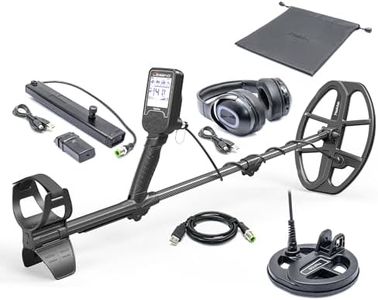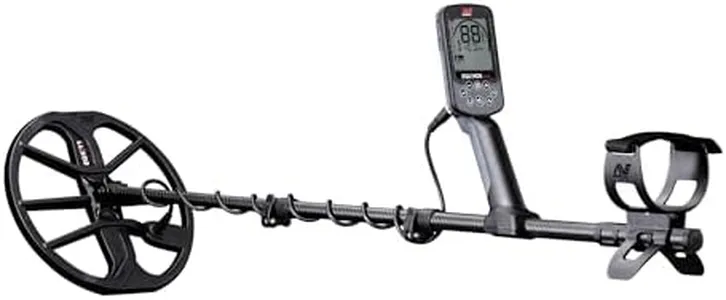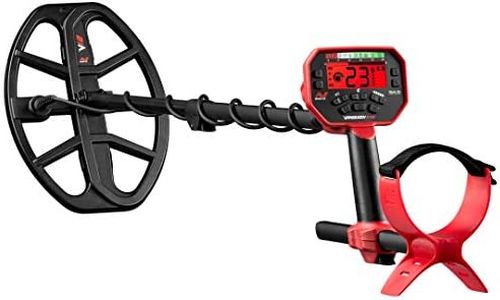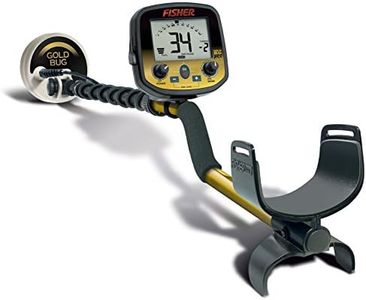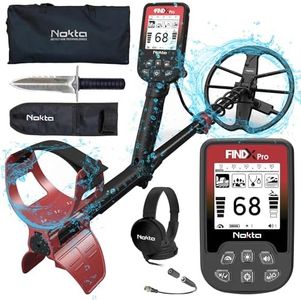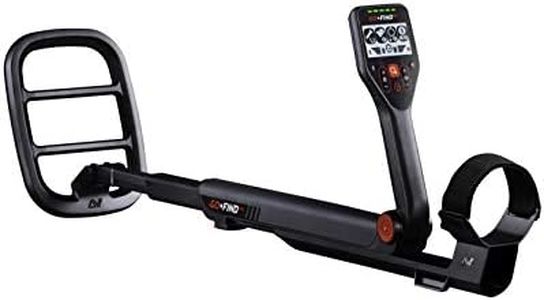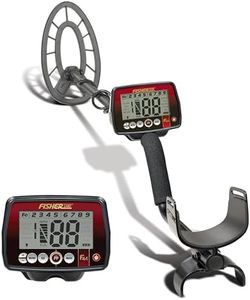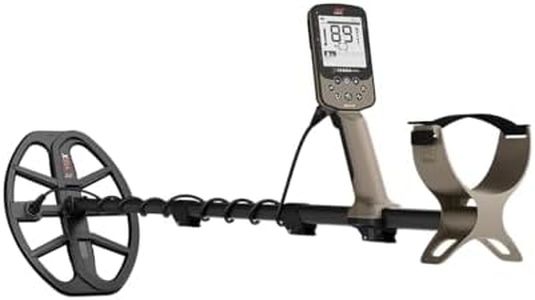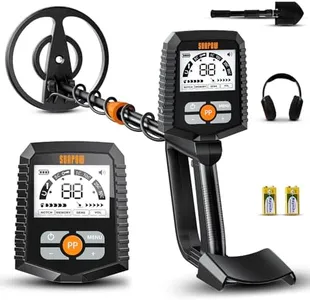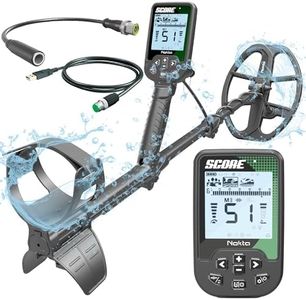We Use CookiesWe use cookies to enhance the security, performance,
functionality and for analytical and promotional activities. By continuing to browse this site you
are agreeing to our privacy policy
10 Best Gold Detectors
From leading brands and best sellers available on the web.Buying Guide for the Best Gold Detectors
Choosing a gold detector can feel overwhelming due to the range of styles and capabilities, but knowing the basics will help you pick the right one. Whether you're searching on sandy beaches, rocky mountains, or in riverbeds, it's important to match the detector's features to your environment and level of experience. Consider where you'll be searching, how deep you want to detect, and how easy you want the device to be to use. Focusing on a few core features will ensure you make a smart purchase.Operating FrequencyOperating frequency is the number of times per second the detector sends an electromagnetic signal into the ground. This is crucial because higher frequencies are generally better at detecting smaller gold nuggets, while lower frequencies penetrate deeper and can find larger objects. Most gold detectors operate in a range from around 5 kHz to over 70 kHz. If you're hunting for small flakes and nuggets, a detector on the higher end is helpful, but if you expect to look for larger pieces or want more depth, a lower-frequency model may suit you best. Your choice should depend on the typical size of gold in your search area.
Ground BalanceGround balance is a feature that helps the detector ignore signals from the natural minerals in the soil so it can better find gold. It's important because highly mineralized ground, like that in gold-rich areas, often causes false signals. There are manual, automatic, and fixed ground balance systems. Manual gives you control but needs more skill; automatic adjusts for you and is best for beginners; fixed is simple, but less flexible. If you'll be in areas with variable soil, go with automatic or manual ground balance. If your location is less mineralized, fixed can work fine.
SensitivitySensitivity determines how well a detector can pick up small or deep targets, including very small pieces of gold. Higher sensitivity finds tinier gold but may be affected by ground minerals, electrical interference, or trash. Many detectors let you adjust sensitivity. Lower settings are calmer and good for busy or mineral-rich sites, while higher settings are better in quieter, cleaner areas. Adjust sensitivity based on your experience, ground type, and what size gold you're after.
Coil Type and SizeThe coil is the round part you sweep over the ground. Coil type and size impact what the detector can find. Larger coils cover more area and go deeper, but might miss smaller nuggets. Smaller coils are more sensitive to tiny gold and better in cluttered ground. There are also different coil designs like concentric (good for depth and sensitivity) and DD (better for mineralized ground). Pick your coil based on the size of gold you're after and how much trash or mineralization is in your area.
Discrimination AbilityDiscrimination refers to the detector's ability to tell the difference between gold and other metals like iron or trash. This is handy to avoid digging up worthless objects. Some detectors let you set discrimination levels so you can ignore signals from unwanted metals. If you're hunting in areas with a lot of rubbish, strong discrimination features can save you time. For cleaner locations, less discrimination allows you to find every speck of gold, so match this feature to your search environment.
Weight and ErgonomicsWeight and ergonomics refer to how heavy and comfortable the detector is to use. This matters because gold hunting often involves hours of sweeping the device back and forth. Lightweight and well-balanced detectors are much easier on your arms and shoulders, especially if you plan to search for long periods. If you have any mobility concerns or anticipate spending lots of time detecting, prioritize comfort and lower weight in your choice.
